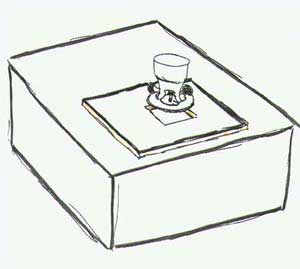Cabinets over outlets and cables
Other Versions
Spanish
Options for installing over electrical outlets and computer cables. July 9, 2002
Q.
What are the various options when installing cabinetry over electrical outlets and computer cables? I have a large library/office installation coming up and I want to build the cabinets with this in mind.
Forum Responses
I believe that the most professional look is to have the electrician and the data guy set the boxes so that you can install a cover plate just as if the back of the cabinet were the wall.
From contributor C:
Sometimes local codes will dictate how you do it. There may be a few options for the electrical and it is a good idea to work out a game plan with the electrical contractor and job super so that optimum placement can be achieved. For instance, on a die wall or reception desk, it would be critical as to the placement of the electrical rough in so it mates up with what you have constructed. An early job walk can allow everyone involved to make changes or modifications as necessary. If you figure the power will come out of the adjoining wall and the electrician figures it should pop up through the floor under the cabinet, it can cost you delays while the finish tile floor is jack hammered or you have to remodel your cabinets. Specify the critical areas and, if necessary, check the locations of outlets, etc with your layout so they don't end up falling half way between two cabinets, etc.
From contributor H:
Contributor C brings up perhaps the most important point - following any applicable code requirements. Cutting a device-box size hole that gets covered with a standard cover plate is a first class method, to be sure, but it's also the toughest to pull off in the field. And depending on the thickness of the cabinet back, there may be a code issue that will require a box extension be installed (and a tolerant electrician).
When the situation permits, I like to cut an oversize hole in the back of the cabinet (approximately one to two inches over) that allows the cover plate to be accessed, and the one to two inch margin allows a bit of layout wiggle room. By using a pattern bit (see image below) in my router and a 3/4 pattern clamped to the back of the cabinet (second image below), the hole can be quickly cut, and the process turned into a no-brainer. Patterns can be sized for single or double boxes.
Again, it's important to get the blessing of your local inspector. I particularly like this approach when installing an entertainment center or such to an existing wall with an outlet that ends up behind the cabinet. I can install the cabinet without touching the electrical device, and still allow full access to the device-box.
The pattern bit shown in the image below costs about $23, and this image is from the carbide.com website.
The importance of the pre-installation review is the other issue that is critical... if the device box falls between two cabinets, it's likely the only solution will be to move the box.


From the original questioner:
Contributor H, I like your idea. I'll be using half-inch pre-finished maple for the backs of my cabinets. What do you do with the exposed edges of the plywood when finished?
From contributor H:
The cabinets I install typically have 1/4" backs, and I use this method in situations where finishing the edges is not required (an outlet within a base cabinet, for example). In your case, I'd think about using an "iron-on" veneer tape - might be a relatively painless way to dress up the edge?
Get back to the basics. Computer cables can be disconnected, grommet holes cut (2 3/8" min for a printer cable to go through, although usb cables can have a smaller hole) and grommet installed. Grommets will not only make your job look better, they will protect the cables from getting worn or stripped while being installed. Doug Mockett and company make an assortment of computer cable management stuff like raceways, grommets, grommets for paper feeds, etc. Data cables can be run in wire troughs installed behind drawers in the cabinets and under countertops at workstations. Just be careful about letting the electrician run his cable there also - most data lines (computer cables) can have electrical interference if laid along side an active electrical line, so you may have to put either or both in conduit.
We use the hole-in-the-back-in-front-of-the-outlet-on-the-wall method with a Doug Mockett grommet - single or double - to dress the cut.

